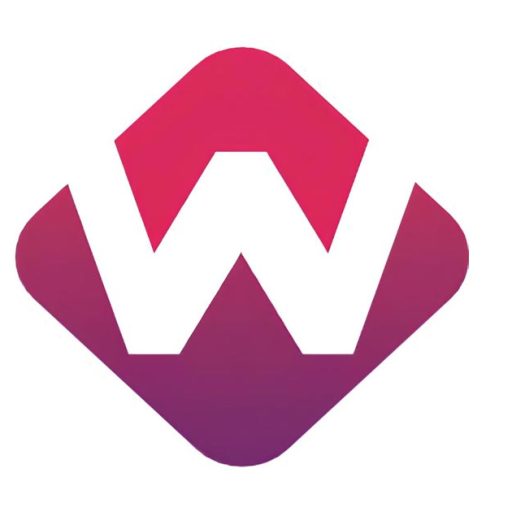Starting a WordPress blog might seem hard, but with the right help, you can do it quickly. You’ll soon have a professional online space.
In 2025, having a blog is key for both people and businesses wanting to grow online.
First, learn about the tools and resources you’ll need for your WordPress blog. Our guide will show you how to do it step by step. This way, creating a successful online presence will be easier.
Why WordPress Remains the Top Blogging Platform in 2025
WordPress is still the top choice for blogging in 2025. It’s loved for its flexibility, easy-to-use interface, and strong community support.
WordPress.org vs WordPress.com: Understanding the Difference
WordPress’s success comes from its two main options: WordPress.org and WordPress.com. WordPress.org lets you host your blog yourself, giving you full control. On the other hand, WordPress.com offers a hosted solution with various plans, including a free one.
Choosing between them depends on your blogging goals and how tech-savvy you are. If you want total control and customization, go for WordPress.org.
Key Benefits of Using WordPress for Blogging
WordPress is great for bloggers because of its many benefits. Some of the main advantages are:
- Flexibility and customization options
- Scalability for growing audiences
- Extensive plugin and theme ecosystem
Flexibility and Customization Options
WordPress has thousands of themes and plugins. This means you can make your blog exactly how you want it. Whether you need a simple blog or a complex e-commerce site, WordPress has the tools.
As your blog grows, WordPress can too. It’s built to handle high traffic and complex content, keeping your site fast and reliable.
Essential Tools and Resources You’ll Need
Starting a WordPress blog requires knowing the key tools and resources. As you begin website building in WordPress, several important factors come into play.
Budget Considerations for Your WordPress Blog
First, figure out your budget. Costs include domain registration, hosting, premium themes, and plugins. “A well-planned budget is the backbone of a successful blog,” says WordPress expert, Matt Mullenweg. A good budget helps you avoid spending too much.
Technical Requirements Checklist
Meeting technical requirements is crucial for a smooth blogging experience. You’ll need:
- Choosing a reliable web hosting service
- Selecting a suitable domain name
- Installing a compatible version of WordPress
Software and Applications
Several software applications can improve your blogging. These include:
- SEO optimization tools like Yoast SEO
- Security plugins such as Wordfence
- Graphic design software like Adobe Creative Cloud
To make your WordPress blog successful, you need certain skills. Learn about:
- Basic HTML and CSS
- WordPress theme customization
- Content creation and marketing strategies
Knowing these essential tools and resources will help you launch and grow a successful WordPress blog.
Selecting and Registering Your Domain Name
A good domain name is key to your WordPress blog’s success. It’s not just picking a name. It’s about creating an identity that your audience will love and remember.
Tips for Choosing a Memorable and SEO-Friendly Domain
Here are some tips for picking a domain name:
- Keep it short and simple
- Avoid numbers and hyphens if possible
- Make it memorable and easy to spell
- Include relevant keywords for SEO benefits
- Ensure it’s not trademarked by another entity
Top Domain Registrars in 2025
After picking a domain name, register it with a reputable registrar. Here are some top choices:
Pricing Comparison
| Registrar | Registration Fee | Renewal Fee | Additional Services |
|---|---|---|---|
| Namecheap | $8.88/year | $10.98/year | Free WHOIS protection, Domain forwarding |
| GoDaddy | $12.99/year | $14.99/year | Free domain privacy, 24/7 support |
| Google Domains | $12/year | $12/year | Simple pricing, integrated with Google services |
Additional Features and Services
Look for registrars with WHOIS protection, domain forwarding, and good customer support. Some also offer web hosting and email hosting.
Choosing and registering your domain name is crucial for your WordPress blog. Take your time and think about the long-term effects of your choice.
Choosing the Right Hosting Provider for Your Blog
Your WordPress blog’s performance and security depend on your hosting provider. When creating a blog with WordPress, picking a reliable host is key. It ensures your site loads fast and stays up for visitors.
Shared vs Managed WordPress Hosting Options
There are mainly two hosting types for WordPress blogs: shared and managed WordPress hosting.
- Shared Hosting: It’s cheap and good for beginners or small blogs. Many sites share the same server.
- Managed WordPress Hosting: This is for pros. It’s fast, secure, and has great support. Perfect for big sites or busy bloggers.
Performance and Security Considerations
When picking a host, think about these important points:
- Loading Speed: Fast sites are better for users and SEO.
- Uptime Guarantee: Choose hosts with high uptime to avoid downtime.
- Security Features: Make sure your host has strong security, like malware scans and firewalls.
Top WordPress Hosting Providers in 2025
Here are top hosts, sorted by price and service:
Budget-Friendly Options
- Bluehost: Has affordable plans with good speed.
- Hostinger: Offers cheap options with a focus on WordPress.
Premium Services for Professional Bloggers
- WP Engine: Provides top-notch managed WordPress hosting.
- Kinsta: Offers premium hosting with great support.
By looking at these factors and options, you can pick a host that fits your needs and helps your blog grow.
How to Make a Blog Website in WordPress 2025: Step-by-Step Installation Guide
We’ll show you how to install WordPress and set up your blog. Installing WordPress is easy. You can do it with a one-click method or manually.
One-Click WordPress Installation Methods
Most hosting providers have a one-click WordPress installer. This is the quickest way to start your WordPress site. Just log in to your hosting account’s control panel, like cPanel, and find the WordPress installer icon.
Steps for one-click installation:
- Log in to your hosting account’s control panel.
- Find the WordPress installer (e.g., Softaculous, QuickInstall).
- Click on the WordPress icon and select “Install.”
- Fill in the required information (site name, admin username, password, etc.).
- Click “Install” to complete the process.
Manual WordPress Installation Process
If you can’t find a one-click installer, you can download WordPress manually. Get it from WordPress.org and upload it to your server.
Steps for manual installation:
- Download the latest WordPress package from WordPress.org.
- Extract the files to your local computer.
- Create a database for WordPress using your hosting control panel.
- Upload the WordPress files to your server using an FTP client.
- Run the WordPress installation script by accessing your site’s URL.
Initial Configuration Settings
After installing WordPress, you need to set up some initial settings.
Setting Up Your Admin Account
You’ll be asked to create an admin account during installation. Choose a strong username and password. Use an email address you can access.
Essential First Steps After Installation
After WordPress is installed, do these essential steps:
| Task | Description |
|---|---|
| Set your timezone | Go to Settings > General and set your timezone. |
| Create a new post | Go to Posts > Add New to create your first blog post. |
| Install a theme | Go to Appearance > Themes to choose and install a theme. |
By following these steps, you’ll have a fully functional WordPress blog. Next, we’ll talk about customizing your blog’s appearance with themes.
Selecting and Customizing Your WordPress Theme
A good WordPress theme is key to engaging your audience and sharing your brand’s message. It not only changes how your blog looks but also how it works and feels to users.
Free vs Premium WordPress Themes
You can pick between free and premium WordPress themes. Free themes are a good start, offering basic looks and functions. Premium themes, however, have more features, better support, and more ways to customize.
Key differences:
- Customization options
- Support and updates
- Advanced features
Mobile Responsiveness and Loading Speed
When picking a theme, think about mobile responsiveness and loading speed. A theme that works well on all devices, from big screens to small phones, is crucial.
Basic Theme Customization Techniques
After choosing your theme, it’s time to make it your own. WordPress has tools to help you change your blog’s look.
Working with WordPress Customizer
The WordPress Customizer lets you tweak your theme live. You can change colors, fonts, and layouts to match your brand.
Using Page Builders for Advanced Layouts
For more detailed changes, try page builders like Elementor or Beaver Builder. They make it simple to build complex designs without needing to code.
| Feature | WordPress Customizer | Page Builders |
|---|---|---|
| Ease of Use | Easy | Easy to Moderate |
| Customization Options | Limited to theme options | Highly customizable |
| Learning Curve | Minimal | Moderate |
Essential WordPress Plugins for Your New Blog
Starting your WordPress journey? Knowing which plugins are key can save you time and boost your blog’s performance. WordPress plugins add specific features to your site, making it more functional and user-friendly.
Security and Backup Plugins
Security is crucial for any blog. Plugins like Wordfence and MalCare provide strong security features. They include malware scanning, firewall protection, and login security.
For backups, UpdraftPlus or VaultPress are great choices. These plugins automatically back up your site’s files and database. This ensures quick recovery in case of data loss.
SEO and Performance Optimization Plugins
To boost your blog’s search engine visibility, use SEO plugins like Yoast SEO or Rank Math. They help optimize your content and meta tags.
For better site performance, plugins like W3 Total Cache and WP Rocket are excellent. They improve loading speed by caching content and optimizing files.
Content Creation and Social Media Plugins
Plugins like CoSchedule and Social Warfare can make content creation easier. They also enhance your social media presence.
Must-Have Plugins for Beginners
- Akismet Anti-Spam: Keeps your blog safe from spam comments.
- Jetpack: Offers security, performance, and traffic insights.
- Yoast SEO: Optimizes your content for search engines.
Advanced Plugin Solutions for Specific Needs
Depending on your blog’s niche, you might need specialized plugins. For example, WooCommerce is essential for e-commerce sites.
By installing these essential plugins, you can greatly improve your WordPress blog’s functionality, security, and performance.
Creating and Organizing Your Blog Content
Now that your WordPress blog is set up, it’s time to create and organize your content. Good content organization is key for a great user experience and SEO.
Setting Up Categories and Tags
Categories and tags help organize your blog content. Categories are broad topics that group related posts. Tags are more specific details about each post.
- Use categories to define your blog’s main themes.
- Apply tags to add relevant subtopics or keywords to your posts.
Creating Your First Blog Posts and Pages
Your first blog posts should introduce your blog’s theme and tone. Consider creating:
- A welcome post that introduces you and your blog’s focus.
- Informative posts that showcase your expertise.
Don’t forget to create essential pages like ‘About’ and ‘Contact’ to provide more information about you and your blog.
Media Management Best Practices
Effective media management is crucial for a smooth user experience. Here are some best practices:
- Organize your media files into folders based on the date or topic.
- Use descriptive filenames and alt tags for images.
An editorial calendar helps you plan and schedule your content in advance. This tool is invaluable for maintaining consistency and ensuring that your content aligns with your overall strategy.
Writing Engaging Blog Posts That Convert
To write engaging blog posts, focus on providing value to your readers. Use compelling headlines and optimize your content with relevant keywords. Make sure your posts are well-structured and easy to read.
By following these guidelines, you’ll be well on your way to creating a well-organized and engaging WordPress blog that attracts and retains readers.
Monetization Strategies for Your WordPress Blog
Monetizing your WordPress blog is key to making money from your passion. You’ll find many ways to earn, each with its own benefits and challenges.
Display Advertising and Affiliate Marketing
Display ads and affiliate marketing are common ways to make money. Display ads pay based on views or clicks. Affiliate marketing pays when you promote products and someone buys through your link.
- Use plugins like AdRotate or Advanced Ads to manage your display ads efficiently.
- Join affiliate programs relevant to your niche to maximize your earnings.
- Disclose your affiliation with products to maintain transparency and trust with your audience.
Creating and Selling Digital Products
Creating digital products is another good way to make money. You can make eBooks, online courses, or software for your audience.
- Identify your expertise and create digital products that offer value.
- Use plugins like Easy Digital Downloads to facilitate the sale of digital products.
- Promote your products through email marketing and social media channels.
Membership Sites and Premium Content
Membership sites and premium content let you offer exclusive content for a fee. This can be a steady income source and build a loyal community.
“Membership sites have become increasingly popular as they offer a steady stream of income and foster a loyal community around your blog.” –
Blogging Expert
Realistic Income Expectations for New Bloggers
As a new blogger, have realistic income hopes. Some make a lot, but it takes time for others.
- Start with modest expectations and be prepared to invest time and effort.
- Continuously analyze and adjust your monetization strategies.
- Diversify your income streams to reduce financial risk.
Tools to Implement Monetization Methods
Many tools and plugins can help with monetization. Some top picks include:
- Yoast SEO for optimizing your content.
- WPForms for creating contact forms and surveys.
- Memberful for integrating membership features.
By using these strategies and tools, you can make your WordPress blog profitable. Success in blogging takes patience, persistence, and learning.
Conclusion: Launching and Growing Your WordPress Blog in 2025
You’ve made it to the end of setting up your WordPress blog. This tutorial has shown you how to get started and customize your blog. Now, you’re ready to create content and grow your online presence.
When you launch your blog, make sure your content is top-notch. Use the plugins and themes you’ve installed to improve your blog’s performance and security. With a strong foundation, you’re on your way to a successful WordPress blog.
To grow your blog, look into different ways to make money. You could use display ads or affiliate marketing. You could also sell digital products or offer premium content. Diversifying your income can make your blog a sustainable business.
Running a WordPress blog takes hard work, but with determination, you can reach your goals. Keep up with the latest WordPress trends and best practices. This will help your blog stay competitive and interesting.
FAQ
What is the difference between WordPress.org and WordPress.com?
WordPress.org lets you host your site yourself. It offers more control and customization. WordPress.com is a hosted platform. It’s easier to use but limits how much you can change your site.
How do I choose a memorable and SEO-friendly domain name for my WordPress blog?
Pick a domain name that’s easy to remember and includes keywords. Keep it short and simple. Avoid numbers and hyphens.
What are the key benefits of using WordPress for blogging?
WordPress is flexible and customizable. It’s scalable and has a big community. These make it great for bloggers.
What are the essential tools and resources needed to start a WordPress blog?
You need a domain name, web hosting, and a WordPress theme. Also, get plugins for security, SEO, and performance.
How do I install WordPress on my website?
You can install WordPress easily with your hosting provider. Or, download and install it manually from WordPress.org.
What are the best practices for creating and organizing content on my WordPress blog?
Use categories and tags to organize your content. Plan with an editorial calendar. Optimize posts with keywords and meta descriptions.
How can I monetize my WordPress blog?
Monetize your blog with display ads, affiliate marketing, or digital products. You can also offer premium content or membership sites.
What are the most important plugins for a new WordPress blog?
Key plugins include security tools like Wordfence, SEO plugins like Yoast SEO, and performance plugins like WP Rocket.
How do I ensure my WordPress blog is mobile-responsive and loads quickly?
Choose a responsive theme and optimize images. Use caching and content delivery networks (CDNs) for fast loading.
What are the realistic income expectations for a new WordPress blogger?
Income varies by niche, audience, and strategy. Be patient and focus on quality content and audience building.






